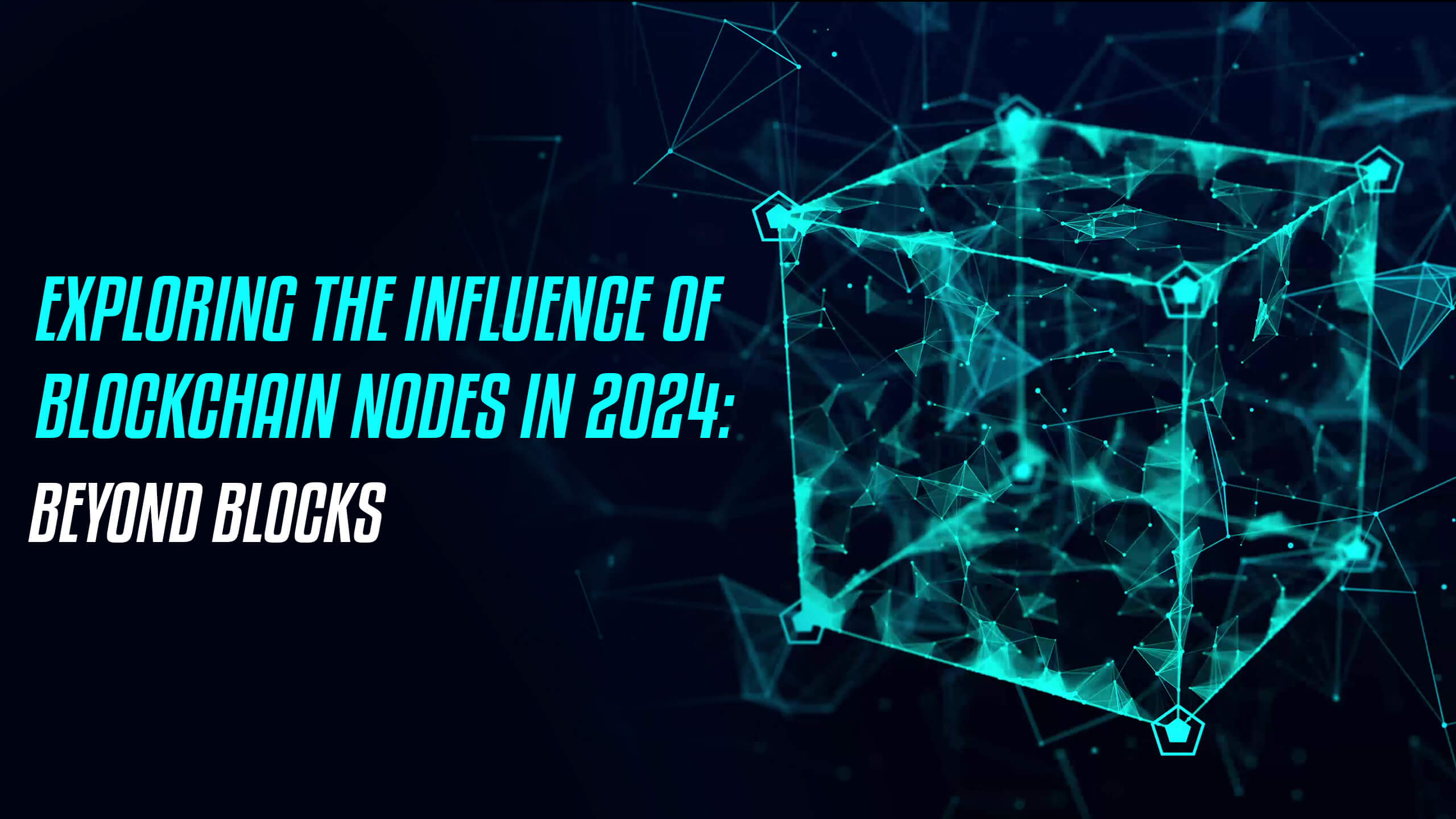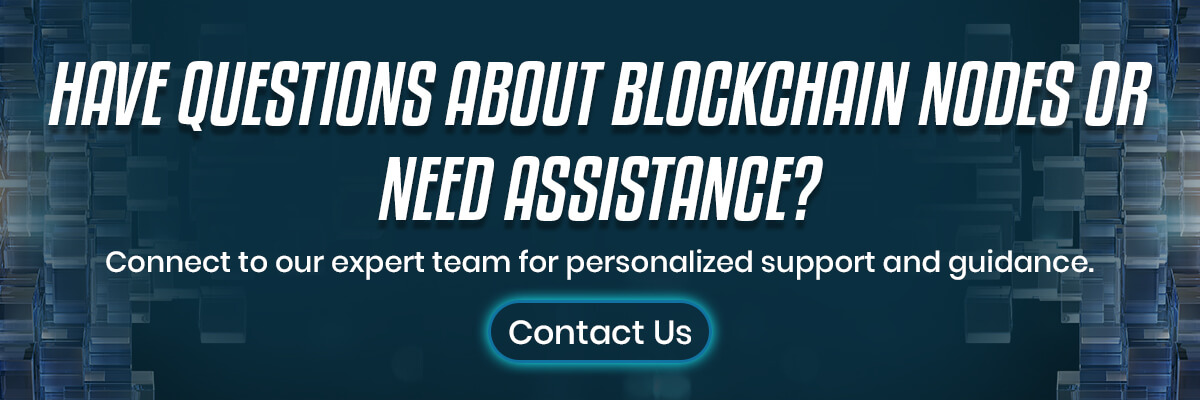Introduction
Blockchain technology has transformed our understanding of data management and transactions in the digital era. At the heart of this innovation is a decentralized network of interconnected blockchain nodes, pivotal in safeguarding the integrity and security of the system. This article explores the importance of blockchain nodes and their role in bolstering the resilience of blockchain networks.
Understanding Blockchain Nodes
In the realm of blockchain technology, nodes serve as the fundamental building blocks of the network. But what exactly are nodes? Simply put, a node is any device that participates in the blockchain network. These devices can range from individual computers to entire data centers, each functioning as a point of connection within the distributed ledger system.
Types of Nodes: Full Nodes, Light Nodes, and Miner Nodes
There are several types of nodes in a blockchain network, each with its own unique role and functionality:
- Full Nodes: Full nodes maintain a complete copy of the blockchain ledger and actively participate in the validation and propagation of transactions. These nodes are essential for ensuring the integrity of the blockchain by independently verifying the validity of each transaction and block.
- Light Nodes: Also known as “lightweight” or “thin” nodes, light nodes are designed to function with reduced computational and storage requirements compared to full nodes. While they do not store the entire blockchain, light nodes still contribute to the network by accessing block headers and relying on full nodes for transaction verification.
- Miner Nodes: Miner nodes are specialized nodes responsible for the process of mining, which involves solving complex mathematical puzzles to validate transactions and add new blocks to the blockchain. These nodes compete with each other to find the solution to the puzzle, with the successful miner being rewarded with newly minted cryptocurrency and transaction fees.
How Nodes Communicate and Interact Within the Network
Nodes communicate with each other through a peer-to-peer network protocol, sharing information such as new transactions, blocks, and updates to the blockchain. This decentralized communication ensures that the blockchain remains resilient to censorship and single points of failure, as there is no central authority controlling the flow of information.
Decentralization in Blockchain and the Role of Nodes in Achieving It
Decentralization lies at the heart of blockchain technology, and nodes play a pivotal role in achieving this distributed network architecture. By distributing the storage and validation of data across a vast network of nodes, blockchain networks eliminate the need for a central authority, thereby reducing the risk of manipulation, fraud, and downtime.
Maintaining Integrity Through Consensus Mechanisms
Consensus mechanisms form the backbone of blockchain networks, ensuring that all nodes agree on the validity of transactions and the order in which they are recorded on the blockchain. These mechanisms rely on the collaborative efforts of nodes to achieve consensus without the need for a central authority. Let’s delve into how blockchain nodes uphold the integrity of the network through
Consensus Mechanisms
Consensus mechanisms are protocols that govern how nodes in a blockchain network reach agreement on the state of the ledger. The two most common consensus mechanisms are Proof of Work (PoW) and Proof of Stake (PoS), each with its own set of rules and incentives.
Proof of Work (PoW)
In a Proof of Work system, nodes, known as miners, compete to solve complex mathematical puzzles in order to validate transactions and add new blocks to the blockchain. The first miner to solve the puzzle broadcasts the new block to the network, and other nodes verify its validity before accepting it. PoW ensures the security of the blockchain by making it computationally expensive to tamper with the transaction history.
Proof of Stake (PoS)
Proof of Stake operates differently from PoW by selecting validators to create new blocks based on the amount of cryptocurrency they hold and are willing to “stake” as collateral. Validators are chosen in a pseudo-random manner, with their likelihood of selection proportional to the amount of cryptocurrency they have staked. PoS is seen as a more energy-efficient alternative to PoW and encourages validators to act honestly to avoid losing their staked assets.
How Nodes Participate in the Consensus Process to Validate and Verify Transactions
Nodes play a crucial role in the consensus process by participating in the validation and verification of transactions. Full nodes independently verify the validity of transactions by checking them against the consensus rules of the network. Once a transaction is validated, it is propagated to other nodes, ensuring that all copies of the ledger remain synchronized.
Role of Nodes in Preventing Double-Spending and Ensuring the Immutability of the Blockchain
One of the primary objectives of consensus mechanisms is to prevent double-spending, where a user attempts to spend the same cryptocurrency tokens more than once. Through consensus, nodes collectively agree on the chronological order of transactions, thereby ensuring that each token is spent only once.
Furthermore, consensus mechanisms contribute to the immutability of the blockchain by creating a permanent and tamper-resistant record of transactions. Once a block is added to the blockchain, it becomes extremely difficult to alter its contents without the consensus of the majority of nodes in the network.
Enhancing Security Through Distribution
The security of a blockchain network relies heavily on its distributed nature, facilitated by the interconnected network of nodes.
Distributed Network in Blockchain Security
Centralized systems are vulnerable to single points of failure, where a single entity or authority can compromise the entire network. In contrast, blockchain networks distribute the storage and validation of data across a multitude of nodes, making it incredibly difficult for any single entity to control or manipulate the system. This distributed architecture not only enhances security but also promotes transparency and trust among network participants.
How Nodes Store a Copy of the Entire Blockchain Ledger
One of the key features of blockchain nodes is their ability to store a complete copy of the blockchain ledger. This means that each node maintains an identical record of all transactions that have ever occurred on the network. By distributing the ledger across multiple nodes, blockchain networks ensure redundancy and fault tolerance, mitigating the risk of data loss or corruption.
Resilience of Blockchain Networks Against Attacks
Blockchain networks are designed to be resilient against various forms of attacks, including censorship, denial-of-service (DoS), and tampering. Since there is no central point of control, attackers would need to compromise a significant portion of the network’s nodes to successfully carry out an attack. This high level of redundancy and decentralization makes blockchain networks inherently more secure than traditional centralized systems.
Security Features Enabled by Blockchain Nodes
Blockchain nodes implement various security features to safeguard the network against potential threats. These features include cryptographic algorithms for securing transactions, digital signatures for authentication, and consensus mechanisms for achieving agreement among nodes. Additionally, blockchain networks may employ measures such as peer reputation systems, encryption, and multi-signature wallets to further enhance security and protect against unauthorized access.
Decentralization as a Security Paradigm
Decentralization is not just a means of achieving consensus; it is also a security paradigm that underpins the entire blockchain ecosystem. By distributing control and authority among a diverse network of nodes, blockchain networks reduce the risk of collusion, corruption, and external interference. This democratization of power ensures that no single entity can exert undue influence over the network, thereby preserving its security and integrity.
Node Incentives and Governance
In addition to their role in maintaining the integrity and security of the blockchain, nodes also play a crucial role in the governance and sustainability of the network.
Incentives for Running a Node
Running a node in a blockchain network comes with its own set of incentives, which vary depending on the type of node and the specific blockchain protocol. Some common incentives for node operators include:
- Transaction Fees: Nodes that participate in transaction validation, such as miner nodes or full nodes, may receive transaction fees as a reward for their services. These fees are typically paid by users to prioritize their transactions and ensure timely processing.
- Mining Rewards: In Proof of Work (PoW) blockchains, miner nodes are rewarded with newly minted cryptocurrency for successfully adding a new block to the blockchain. This process, known as mining, incentivizes nodes to contribute computational power to the network and secure the blockchain.
- Staking Rewards: In Proof of Stake (PoS) blockchains, validator nodes are chosen to create new blocks based on the amount of cryptocurrency they have staked as collateral. Validators earn staking rewards in the form of transaction fees and newly minted tokens for their participation in block creation and validation.
Economic Incentives in Maintaining a Healthy Node Ecosystem
Economic incentives play a vital role in encouraging node operators to maintain and secure the blockchain network. By rewarding nodes for their contributions, blockchain protocols incentivize participation, ensure network uptime, and promote the overall health and sustainability of the ecosystem. Without these incentives, nodes may be less motivated to perform their duties, leading to decreased network security and reliability.
Challenges in Node Governance and Potential Solutions
While economic incentives are essential for encouraging node participation, they also present challenges in terms of node governance and decision-making. In decentralized blockchain networks, node operators may have differing interests and priorities, making it challenging to reach a consensus on governance issues such as protocol upgrades, network changes, and resource allocation.
Potential Solutions
To address these challenges, blockchain communities often employ various governance mechanisms to facilitate decision-making and coordination among node operators. These mechanisms may include:
- On-chain Governance: Some blockchain protocols incorporate governance mechanisms directly into the blockchain, allowing node operators to vote on proposed changes or upgrades using their stake or voting power.
- Off-chain Governance: In other cases, governance decisions may be made through off-chain discussions, forums, or community-driven initiatives, with node operators collaborating to reach a consensus on important issues.
- Decentralized Autonomous Organizations (DAOs): DAOs are decentralized entities that operate on blockchain networks and are governed by smart contracts and voting mechanisms. These organizations enable node operators to collectively manage resources, make decisions, and govern the network in a decentralized manner.
Conclusion
Blockchain nodes are the unsung heroes of the decentralized revolution, quietly working behind the scenes to uphold the integrity and security of the blockchain network. Throughout this blog post, we’ve explored the critical role that nodes play in maintaining the decentralized nature of blockchain technology and ensuring the trustworthiness of digital transactions.
As blockchain technology continues to evolve, so too will the role of blockchain nodes. Emerging trends such as sharding, sidechains, and advanced consensus mechanisms promise to further enhance the scalability, security, and efficiency of blockchain networks, opening up new possibilities for decentralized applications and digital ecosystems.
In conclusion, the significance of blockchain nodes cannot be overstated. From securing transactions to maintaining network integrity, nodes are the foundation upon which the decentralized future is built. By understanding and appreciating the role of nodes in the blockchain ecosystem, we can better grasp the transformative potential of this groundbreaking technology.
 +91 95109 87700
+91 95109 87700 +44 20 3290 3710
+44 20 3290 3710




